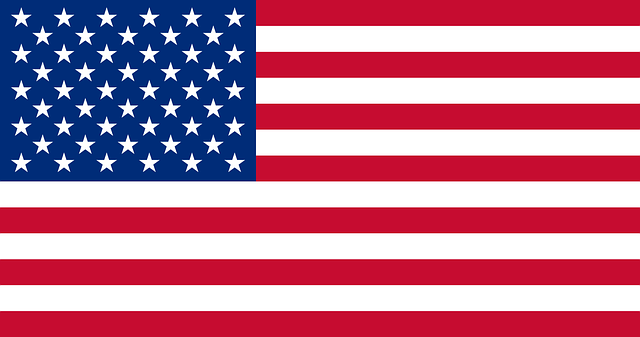The article provides a comprehensive exploration of the symbolism and historical significance of the American flag, known as the Stars and Stripes. From its inception with thirteen stripes after the Revolutionary War to its current fifty-star design post Hawaii's admission, the flag reflects the United States' history, values, and aspirations. It has been a source of both reverence and contention, capturing the essence of America's diversity and change over time. Today, American flags for sale are omnipresent, symbolizing freedom, unity, and national identity across the country. When purchasing an American flag, it's important to consider those that adhere to government specifications and high-quality standards, ensuring they reflect the country's rich historical tapestry accurately. The flag's colors—red, white, and blue—embody core American values and are integral to national traditions, from sports events to solemn ceremonies. Proper etiquette in handling the flag ensures its significance as a symbol of freedom, democracy, and unity, and as an educational tool that fosters a cohesive national identity. American flags for sale are central to this tradition, allowing individuals to honor and participate in these customs, thereby maintaining the flag's relevance and importance in American society.
The American flag, a universal emblem of freedom and democracy, is more than a piece of cloth; it’s a woven narrative of national pride, history, and values. Its vibrant hues and stars have long told the story of America’s origins and evolution. This article delves into the symbolism etched within each stripe and star, tracing their historical significance and exploring how these elements came to represent the diverse tapestry of the nation. For those looking to honor this legacy, “American Flags For Sale” provide opportunities to select a flag that embodies the essence of America’s heritage. Additionally, we’ll guide you through the traditions and etiquette that underscore the respect due to this iconic symbol. Join us as we unfurl the layers of meaning behind the American flag, a constant reminder of the ideals it stands for.
- The Colorful Story Behind Each Stripe and Star of the American Flag
- Symbolism in the Stars and Stripes: A Historical Perspective
- American Flags For Sale: How to Choose a Flag that Reflects National Heritage
- Celebrating the Significance of the American Flag: Traditions and Etiquette
The Colorful Story Behind Each Stripe and Star of the American Flag

The American flag, a symbol deeply ingrained in the nation’s identity, is a canvas of colors and shapes each holding a rich narrative. The story behind the stars and stripes dates back to 1777 when the Continental Congress officially adopted what would become the model for all subsequent U.S. flags. Each star represents a state within the Union, with the number of stars reflecting the number of states at the time of their addition to the flag. The flag has undergone various changes in its design, most notably the addition of stars as new states joined the Union. Today, American Flags For Sale are a testament to unity and patriotism, each star a beacon of each state’s individuality and collective strength.
The thirteen stripes alternating red and white hold their own significance, with the red symbolizing valor and hardiness, and the white signifying purity and innocence. These colors also pay homage to the British Union Jack, from which they were derived, as a nod to America’s breakaway from colonial rule. The flag serves as a tangible representation of freedom, democracy, and the American ethos. It is a symbol that unites citizens across diverse backgrounds, reminding them of their shared history and the collective aspirations that define the country. When displaying or purchasing an American Flag, one isn’t just acquiring a piece of cloth but embracing the values and the narrative it represents, making American Flags For Sale more than mere decorations but symbols of identity and pride.
Symbolism in the Stars and Stripes: A Historical Perspective

The Stars and Stripes, affectionately known as the American flag, has long been a symbol of national identity and pride for the United States. Its design, with thirteen alternating red and white stripes representing the original thirteen colonies, and fifty white stars on a blue field representing the fifty states, encapsulates a rich tapestry of history, values, and aspirations. The historical evolution of this emblem is as compelling as its present-day significance. From its inception following the American Revolution to its current form after Hawaii’s statehood in 1960, each iteration of the flag has carried with it the weight of national events and the collective dreams of Americans.
Throughout its history, the Stars and Stars has been a subject of both reverence and controversy, reflecting the dynamic nature of American society. As it evolved, each change was carefully considered to align with the nation’s growth and shifting ideals. Today, American flags for sale are found across the country, from small town Main Streets to the grand boulevards of major cities, serving as a visual reminder of the country’s heritage and ongoing narrative. The stars and stripes, whether flying high over government buildings or displayed in homes and businesses, continue to symbolize freedom, unity, and a shared sense of purpose among Americans. Those looking to embrace this national emblem can find American flags for sale that range from historical replicas to modern interpretations, each offering an opportunity to honor the legacy and spirit of the United States.
American Flags For Sale: How to Choose a Flag that Reflects National Heritage

When considering a flag that encapsulates the essence of America’s national heritage, it’s crucial to look for authentic and high-quality representations of the American Flag. “American Flags For Sale” can be found in various forms, from handcrafted hand-sewn flags to mass-produced ones. To honor the storied history and symbolism inherent in the Stars and Stripes, one should seek out flags that adhere to established specifications set by the U.S. government. These flags must have thirteen horizontal stripes alternating red and white, a blue field with fifty white stars arranged in seven vertical rows of seven each representing the 13 colonies and the 50 states respectively. The flag’s proportions, materials, and construction should reflect both the tradition and the durability befitting national emblems displayed in homes, businesses, and public spaces.
In addition to adhering to design specifications, discerning buyers should consider the flags’ materials and manufacturing processes. Flags made from durable, weather-resistant fabrics like polyester or nylon are preferable for outdoor use as they can withstand various environmental conditions without fading or deteriorating. For indoor display, a cotton flag might be more appropriate due to its softer texture and authentic appearance. Regardless of the material chosen, each American Flag For Sale should be crafted with attention to detail to preserve the symbolic colors and imagery that represent the country’s values, history, and unity. Whether for personal use or as a gift, selecting a flag that accurately represents the national heritage is a meaningful act of patriotism and civic pride.
Celebrating the Significance of the American Flag: Traditions and Etiquette

The American flag, a potent emblem of national pride and identity, holds deep symbolism that is celebrated across the nation. Its red fields, white stars, and blue stripes are not merely colors on a canvas but represent values and aspects of the country’s history and character. Traditions surrounding the flag are woven into the fabric of American society, from the solemn playing of the national anthem at sports events to the dignified ceremonies marking significant historical dates. The flag is a tangible connection to the ideals of freedom, democracy, and unity that define the United States. It serves as a reminder of the sacrifices made by those who have defended these ideals throughout history.
When commemorating moments of collective joy or solemnity, American flags for sale are often at the heart of the celebration. Whether it’s at a local government building, a community gathering, or an individual’s home, the flag is a symbol of civic engagement and respect for tradition. Proper etiquette dictates how to handle the flag with reverence, from the manner of its display to the protocol for its disposal when it has reached the end of its serviceable life. This etiquette ensures that the flag retains its significance and serves as an educational tool for younger generations to understand the values it represents. It is through these traditions and the etiquette surrounding the American flag that its meaning continues to resonate, fostering a sense of belonging and shared identity among Americans from all walks of life.
